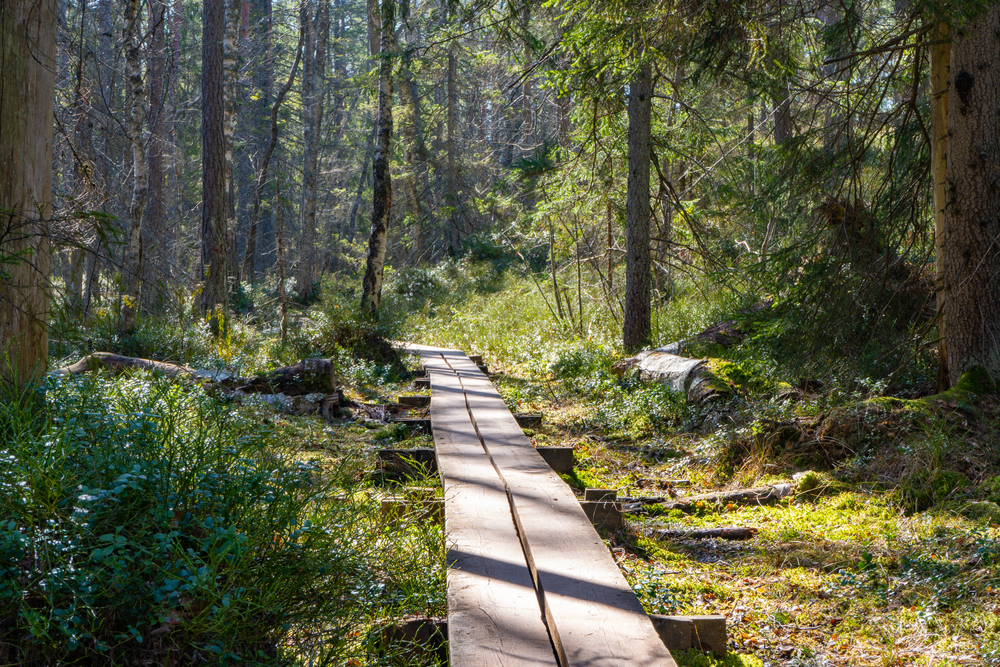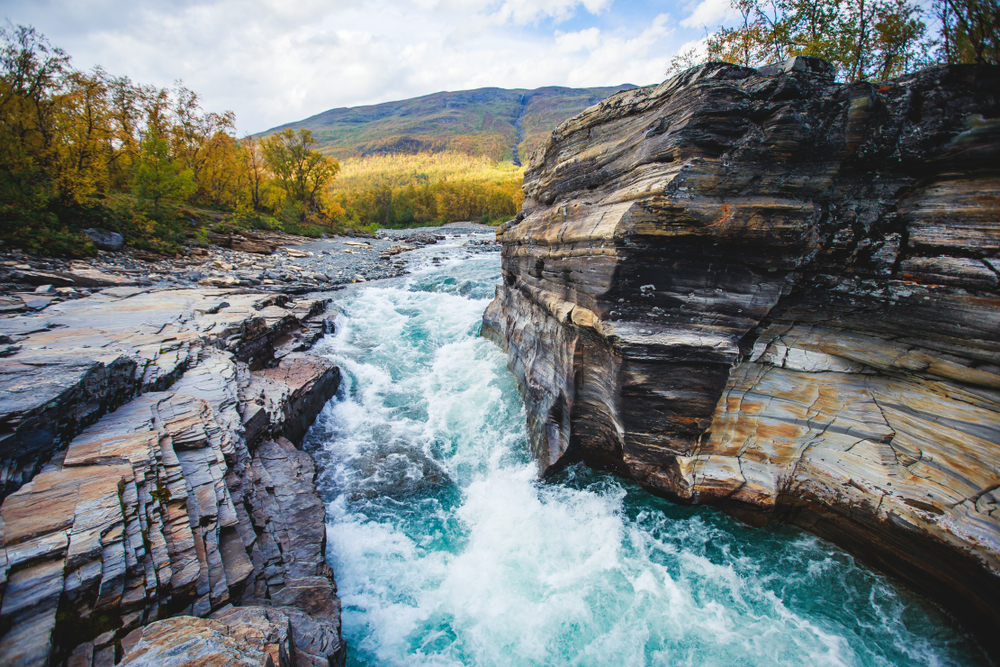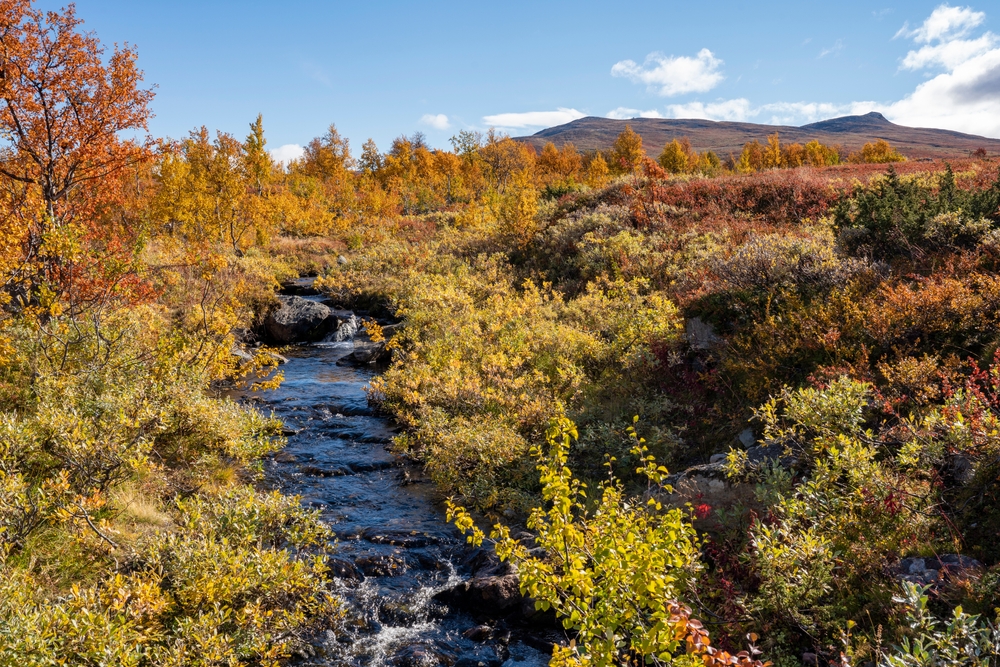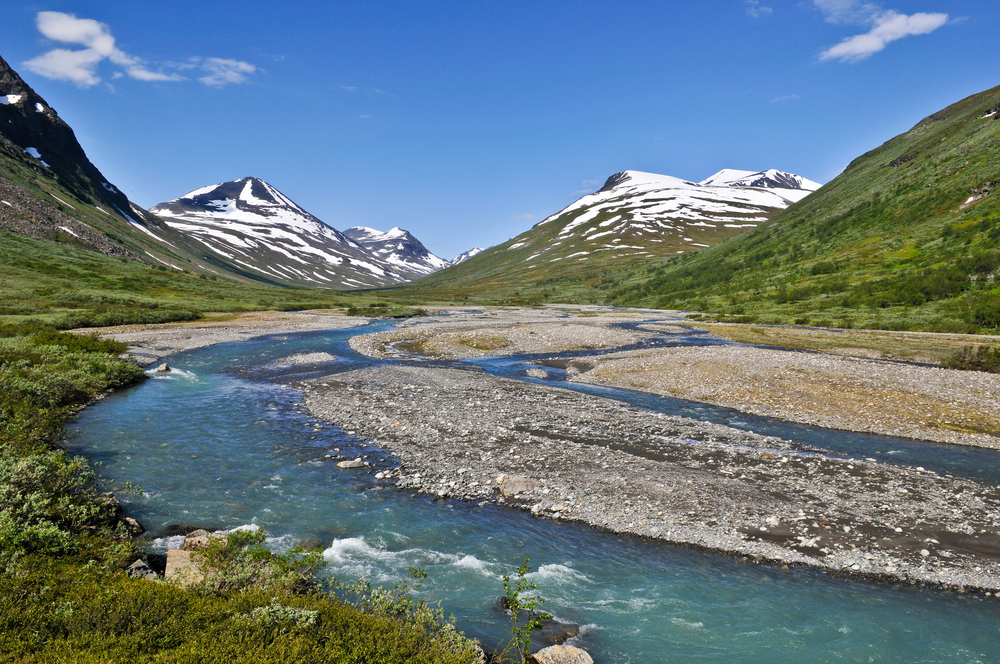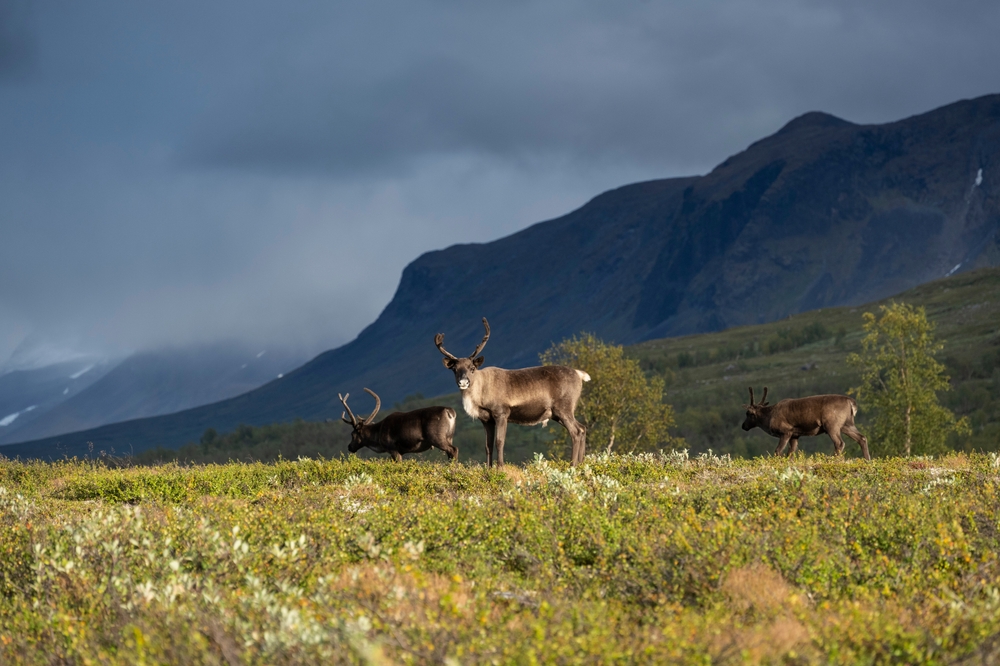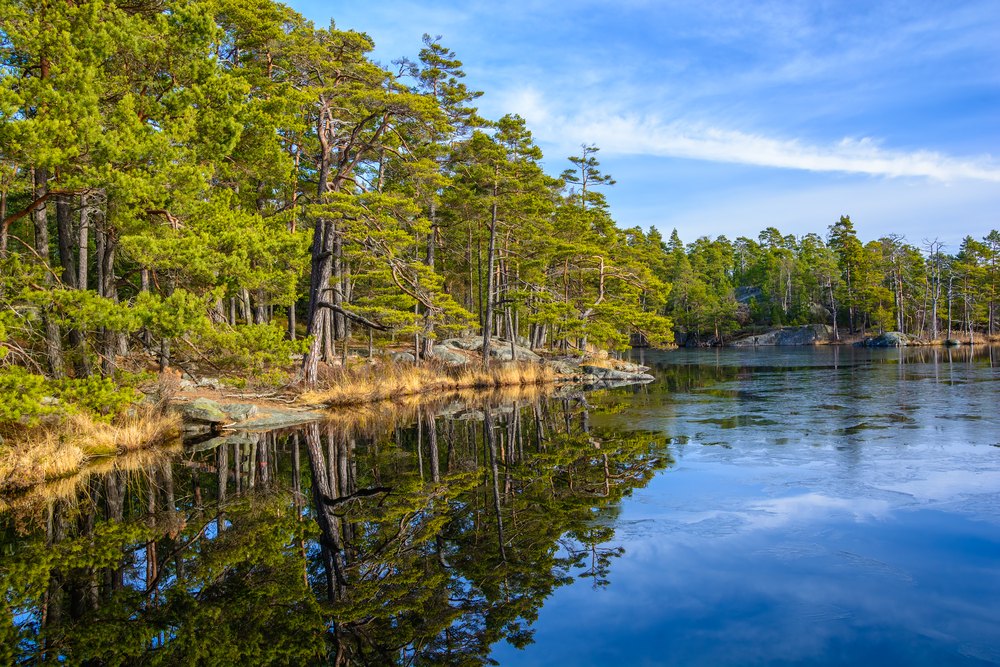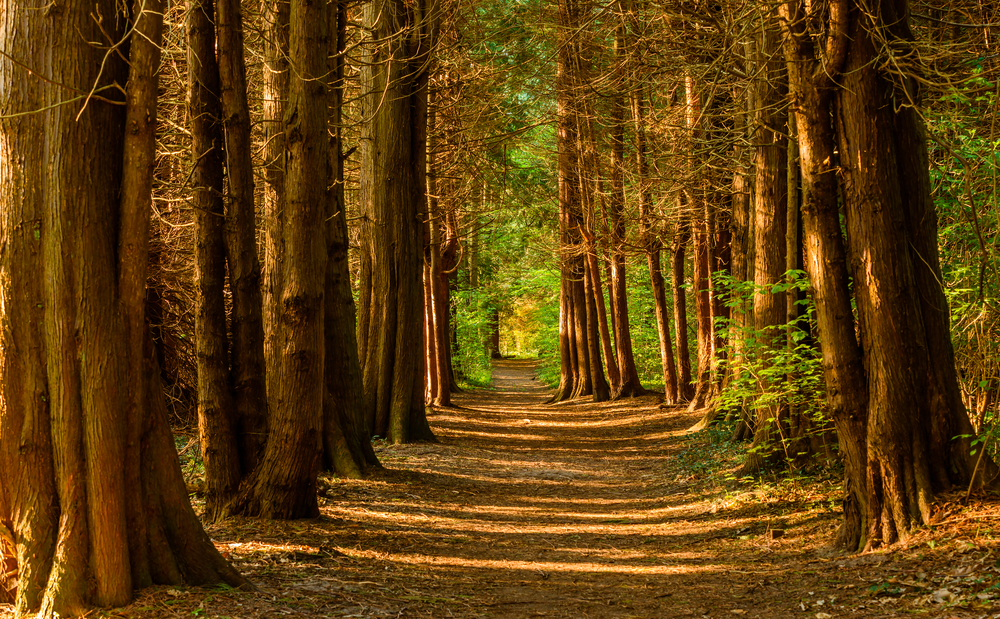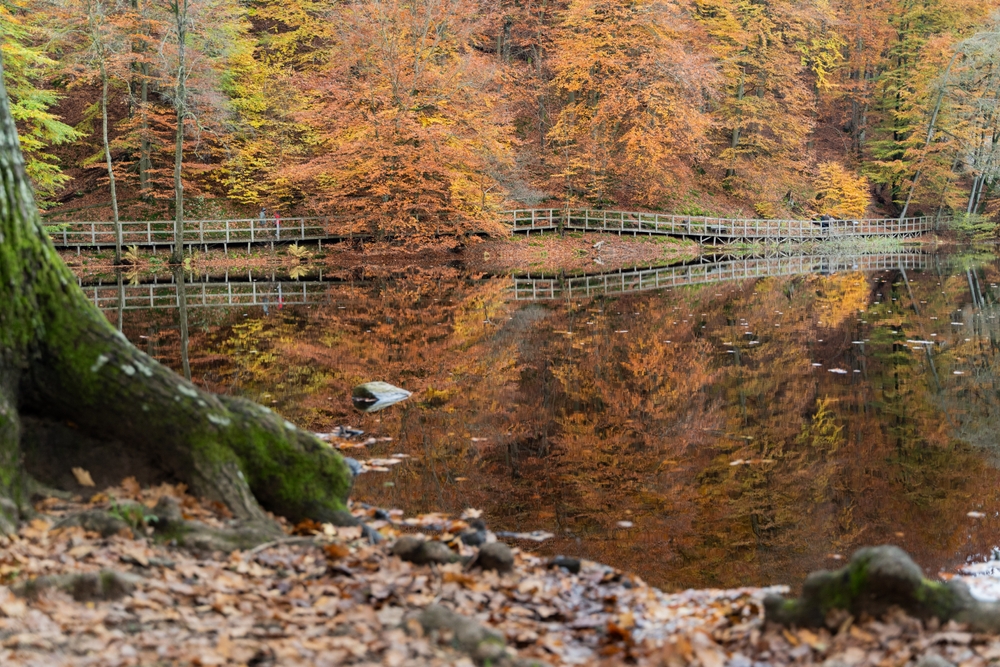Store Mosse Overview
Store Mosse National Park, located in southern Sweden, covers approximately 38 square miles (98 square kilometers) and is the largest bog area in southern Sweden.
The name “Store Mosse” translates to “Great Bog” in English, reflecting the park’s vast expanse of wetlands, raised bogs, fens, and forested islands. It is situated in Jönköping County, near the town of Värnamo, and is a haven for nature enthusiasts who seek to explore one of Sweden’s most ecologically rich and pristine landscapes.
The park’s terrain is predominantly composed of peat bogs, making it a unique feature in the otherwise forested and agricultural region of southern Sweden. The landscape includes open mires, sedge meadows, and scattered pine forests, creating an otherworldly atmosphere that changes with the seasons.
The open bogland, with its golden-brown hues in autumn and vibrant greens in spring and summer, is a stark contrast to the surrounding dense woodlands. The park is interspersed with small lakes such as Kävsjön and Häradsösjön, which serve as crucial habitats for birdlife. Wooden boardwalks and hiking trails allow visitors to traverse the bog safely while minimizing environmental impact.
Store Mosse National Park is renowned for its diverse wildlife, particularly its bird populations. It is a designated bird sanctuary, attracting birdwatchers who come to observe species such as cranes, whooper swans, and great grey owls. In the spring and autumn, migratory birds stop at the park’s lakes, creating spectacular birdwatching opportunities.
The wetlands and forests are home to moose, red foxes, roe deer, and European badgers. While lynx are known to inhabit the region, they are elusive and rarely seen. The bogs support an array of insects, including butterflies and dragonflies, which thrive in the park’s wetland environment.
Visitors are drawn to the park not only for its wildlife but also for its scenic hiking trails and viewpoints. The Kävsjön Tower is a particularly popular spot, offering panoramic views over the expansive bog. Other popular sites include Svänö, a historic farmstead that provides insights into traditional Swedish rural life, and Lövö, where visitors can explore a mix of wetland and forest landscapes.
The well-maintained trails, such as the Wibecksleden and Svartgölsleden, provide varying levels of hiking difficulty, catering to casual walkers and more experienced trekkers alike. In winter, the park transforms into a snowy wilderness, offering opportunities for cross-country skiing.
Store Mosse National Park is managed by the Swedish Environmental Protection Agency and has seen success in conservation efforts aimed at preserving its fragile peatland ecosystem. Wetlands are highly sensitive to environmental changes, and efforts have been made to prevent drainage and degradation of the bog.
Conservationists have worked to maintain the park’s biodiversity, ensuring that migratory birds continue to find refuge in its lakes and marshes. However, climate change poses an ongoing challenge, as shifting precipitation patterns and temperature changes may impact the delicate balance of the bog ecosystem.
The park’s management continues to focus on sustainable tourism, habitat restoration, and environmental education to ensure that future generations can experience this unique landscape.








































































